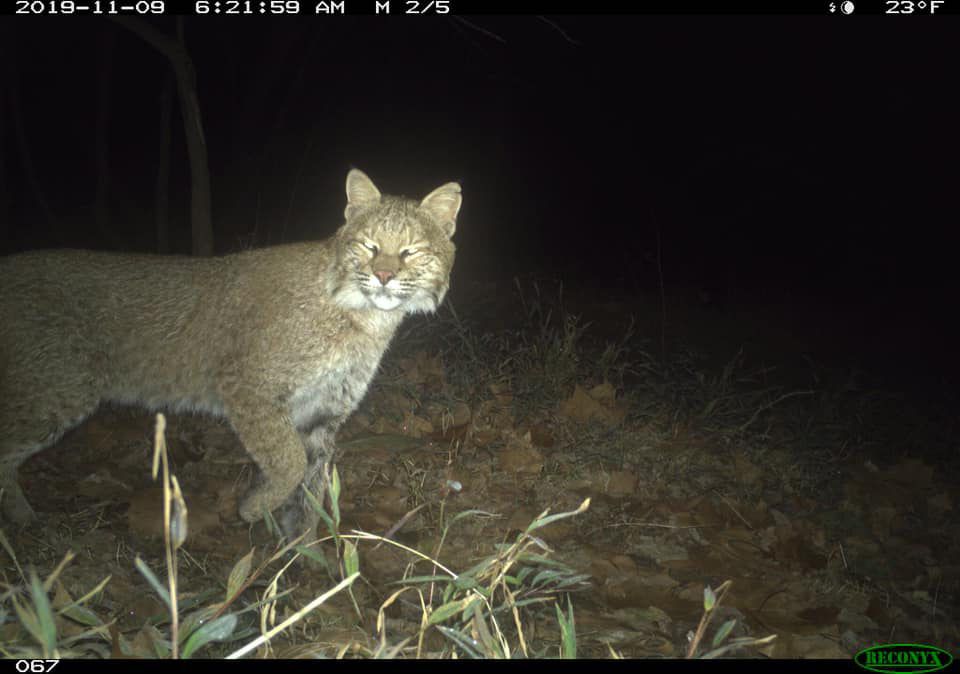A photo of a bobcat roaming the Chesapeake & Ohio Canal near the Palisades neighborhood in Northwest Washington, D.C., was uploaded to Facebook last week, sparking excitement on social media.
The photograph was captured Nov. 9 at 6:22 a.m. approximately three miles from Georgetown’s campus. Dan Herrera, a field technician for the Humane Rescue Alliance, posted the photo to the Capital Naturalist Facebook group Jan. 10 after uncovering the snapshot. The post has since accumulated 805 reactions, 92 comments and 306 shares.
While the bobcat sighting was exciting, it does not come as a surprise after previous sightings in the Delaware, Maryland and Virginia area according to Alonso Abugattas Jr., naturalist and founder of the Capital Naturalist Facebook.

“We had a video of one in Arlington that made the news last year, and several had been hit on the roads in NOVA as well,” Abugattas wrote in an email to The Hoya. “So it’s great, really neat, but not a great surprise either.”
The bobcat’s D.C. visit indicates there are suitable paths for wildlife movement from rural areas to urban centers, according to William J. McShea, wildlife ecologist at the Smithsonian Conservation Biology Institute.
“If one animal can make that transit than others can as well. Young males are more likely to move, but the pathway will be similar for mature females. These animals will keep moving unless they can find a suitable amount of habitat for residency,” McShea wrote in an email to The Hoya. “There might be sufficient area within Rock Creek Park or along the Anacostia/Potomac for a small population but it will never be large due to the cat’s aversion to people.”
The camera that captured the bobcat is operated by DC Cat Count, a three-year project estimated to conclude in June 2021. DC Cat Count is a collaboration between the Humane Rescue Alliance, Petsmart Charities, the Humane Society of the United States, the American Society for the Prevention of Cruelty to Animals and the SCBI.
The initiative utilizes a combination of cameras, surveys and data collection and analysis in an effort to estimate the population of cats in D.C., according to Annalisa Meyer, deputy director of communications at the SBCI.
“At the conclusion of this project, we will have estimated the number of all cats within Washington, D.C. and illustrated how cat population segments interact,” Meyer wrote in an email to The Hoya. “Furthermore, we will have developed logistically feasible and scientifically sound tools and protocols that can be used by a wide variety of animal welfare or municipal organizations to facilitate data-driven cat population management.”
DC Cat Count launched the population project to better understand cat dynamics and especially to address the controversy surrounding population management and other feline debates, according to the DC Cat Count website.
Three years ago, female bobcat Ollie escaped from the Smithsonian National Zoo, sparking media attention.The escape triggered a large search effort in surrounding neighborhoods. She was found and returned safely to her enclosure after two days.
As for threats posed by a bobcat population in D.C., Washingtonians have nothing to worry about, according to McShea.
“All carnivores eat other species of animals, but I would not consider that a threat. Bobcats are generalists that eat a variety of small mammals and birds,” McShea wrote. “They do not usually associate with humans or their waste (garbage) and will not likely have any impact on humans in DC.”
The bobcat’s appearance is a good sign for D.C. and its surrounding areas as many counties are attempting to provide more habitats for native species, according to Abugattas.
“These days, some animals are making comebacks and many local counties are trying to combat invasives, providing more habitat for these animals. So that we see one, is a good sign,” Abugattas wrote. “Hopefully we will see more of these and other less common animals as we improve our habitat.”





















Rafid munir • Jul 20, 2021 at 12:45 am
its really amazing blog I like it because I got what I need from it I recommended it to all of the views